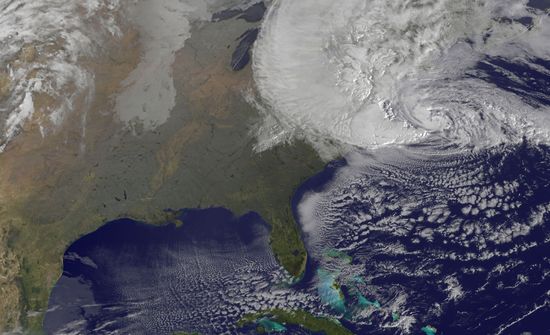A Young Donor’s Striking Niche: Tracking Severe Weather
/
The Merage family has a bundle of foundations and philanthropic interests, including Jewish causes, arts, and early education. But one of its younger members has homed in on storm tracking and the study of severe weather.
You knew somebody got rich from the invention of the Hot Pocket, and those somebodies are brothers David and Paul Merage, who co-created the microwaveable snack. They ultimately sold their business, Chef America, to Nestle for $2.6 billion, and have gone on to other successful investment endeavors. Headquartered in Colorado (May 11 is even David Merage Day in the state), the family has four foundations with shared leadership.
It’s a different setup, as opposed to the common approach of having one family foundation with members serving on the board, and it allows even the younger generation some autonomy with their giving.
So while much of the family’s philanthropy is devoted to Jewish causes and education, the wild card in the mix seems to be the Jonathan Merage Foundation, founded in 2006 with priorities in solar power and the study of severe weather.
The foundation of Jonathan Merage—in the third generation of donors along with Sabrina Merage—is pretty small, with assets of a little over $3 million and a handful of grantees. But its storm-related niche is unique and the beneficiaries are pretty cool.
For one, the foundation has backed the University of Colorado Boulder’s College of Engineering and Applied Science, funding some cutting-edge storm-chasing gear. Merage was a seed funder for a project called VORTEX2 in 2010, the largest collective experiment to study tornadoes. In 2014, the foundation continued its support for this work, backing lightning detection equipment, and unmanned aircraft that can fly on autopilot and send weather data to an SUV following on the ground.
The foundation’s latest grant is going to the University of Hawaii’s School of Ocean and Earth Science and Technology for its work to improve storm forecasting using balloons to collect lightning data. Our models for monitoring hurricanes are still not great, and the university project aims to improve understanding of how they form and build strength.
There’s a lot of potential in the science of extreme storms like tornados and hurricanes, which collectively cause tremendous destruction every year, with the toll likely to grow in decades ahead, thanks to climate change.
In an increasingly crowded philanthropic landscape, it's often difficult for smaller donors to find a very specific but important niche where their money can make a difference. Extreme weather strikes us as a smart choice. Obviously, there's a fair amount of government money in this area, but we haven't seen many funders focusing on weather. It will be interesting to see where Jonathan Merage heads with his giving.
As for Merage's backstory, his interest in severe weather and atmospheric science dates at least back to his undergraduate days, at Purdue University. In recent years, he's also been involved in photography. On his LinkedIn page, he describes himself as an "Independent severe storms forecaster, documenter and analyst specialized in high-impact photography and video—focused on lightning, tornadoes and high energy meteorological phenomena."
That's not a professional profile you'll see every day. And the fact that there's some grantmaking capital in the background is reminder of the extraordinary diversity of modern philanthropy and how, over time, funding ends up going to just about every issue you could imagine.
Related:








